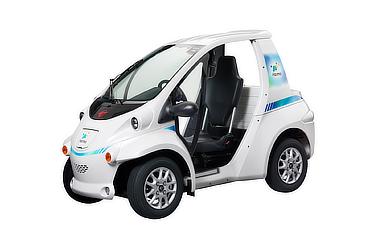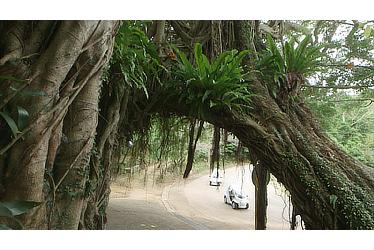Oct. 26, 2015
Toyota to Launch Trial Car Sharing Service in Okinawa
Tokyo, October 26, 2015―Next year, Toyota will use a new trial project on the subtropical island of Okinawa to assess the viability and benefits of tourism-centered car sharing. The service will operate from January through the end of the year on the island's Motobu Peninsula, and will be based around Ha:mo, an optimized local transport system developed by Toyota.
Since many of Okinawa's most popular tourist attractions are located along the Motobu Peninsula―including the Churaumi Aquarium, Nakijin Castle Ruins and Kouri Island―tourist numbers visiting these sites remain strong. However, the percentage of tourists actually staying in those areas is lower than in surrounding areas. Development of the local economy through tourism is therefore a pressing issue right now, and Toyota believes that one possible solution could involve car-sharing services that enable freedom of movement with minimal environmental impact.
Toyota is conducting this trial with cooperation from the Motobu Town Tourism Association, the Nakijin Village Tourism Association, and the JTB Group, in the hope that it will help develop tourism in the region by enabling people to discover new tourist sites and plan trips that take advantage of unique regional attractions. Toyota's vehicle of choice will be the COMS, an ultra-compact electric vehicle manufactured by Toyota Auto Body, with 30 units stationed at hotels and tourist sites.
Each COMS vehicle will be equipped with a tablet running a newly developed telematics app, which recommends tourist itineraries linking local points of interest. The app provides route directions and information on each tourism spot, offering courses such as a four-hour exploration tour of the UNESCO World Heritage-listed Nakijin Castle Ruins and nearby traditional villages.
Use of ultra-compact mobility vehicles increases the accessibility of areas such as roads that are too narrow for cars or too steep for bicycles, thus making more efficient use of the limited time tourists may have at their destinations.
To help ensure that this project has a strong basis of regional knowledge, the service will primarily be operated by local tourism associations. Installation of chargers and development of travel itineraries will be managed by the JTB Group, and tourists will be able to register for the vehicles at designated hotels as well as the JTB Group's booking websites and other locations.
Through this initial trial, Toyota will assess the effectiveness and usefulness of the Ha:mo system in improving access to tourism sites, and in stimulating local economies through increased interactions between tourists and locals. After accumulating operational know-how, Toyota will consider expanding the model to other regions within the prefecture. Going forward, it also hopes to contribute to the construction of a new transportation network, making low-carbon, highly-convenient mobility widely available.
Ha:mo is a transport management system that seamlessly optimizes the combined use of personal vehicles and public transportation. Toyota has been conducting field tests in Toyota City since October 2012, and is currently expanding that project using 100 COMS vehicles within a vehicle management system that connects users with vehicles and parking stations.
| Dates | Mid-January 2016 until the end of December 2016 |
|---|---|
| Locations |
|
| Number of vehicles | 30 |
| Cost | Future announcements to be made by local tourism associations |
- COMS Ultra-compact Electric Vehicle
- Key Specifications

| Length | 2,395 mm |
|---|---|
| Width | 1,095 mm |
| Height | 1,500 mm |
| Maximum speed | 60 km/h |
| Powertrain | Battery and motor |










